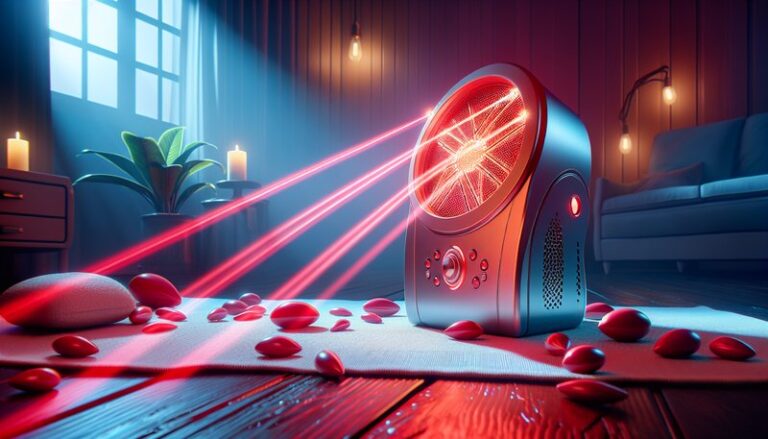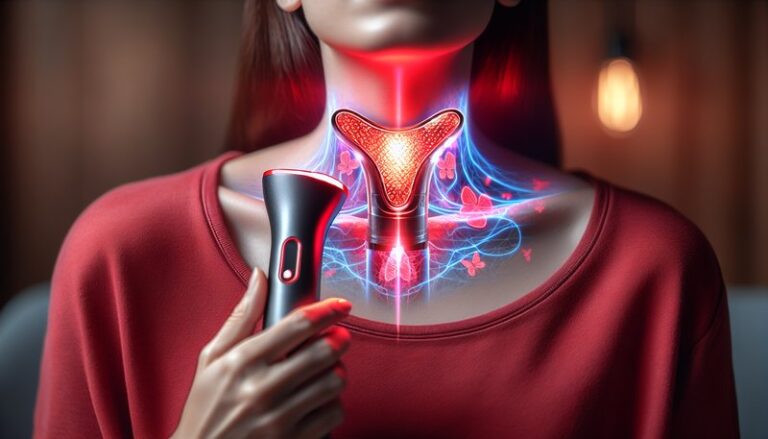Does Red Light Therapy Reduce Bruising?
Does Red Light Therapy Reduce Bruising?
Have you ever bumped into something only to find a painful bruise developing hours later? Many people wonder how to speed up recovery and minimize the visibility of bruises. One emerging option is red light therapy (RLT).
This article delves into the effectiveness of red light therapy in reducing bruising, exploring its benefits, considerations, and alternatives. By the end, you’ll have a clearer understanding of whether this treatment method may be a suitable option for you.
Key Takeaways
- Red light therapy may promote healing and reduce the appearance of bruises.
- It works by enhancing blood circulation and supporting cellular repair.
- Alternative treatments like ice therapy and topical creams are also effective for managing bruises.
What is Red Light Therapy?
Red light therapy is a non-invasive treatment that uses low wavelengths of red light to penetrate the skin. This method stimulates the mitochondria in cells, leading to increased energy production and enhanced healing processes. Commonly used for skin rejuvenation and pain relief, red light therapy is gaining attention for its potential to assist with bruise recovery.
Red light therapy operates on a simple premise: by delivering light energy directly to the skin, it can help improve circulation and reduce inflammation. The technique is typically administered using LED devices and can be found in clinics, spas, and even in home-use devices.
What are the Benefits of Red Light Therapy?
Understanding the benefits of red light therapy will illuminate why many consider it for healing bruises.
Accelerated Healing Process
One of the primary benefits of red light therapy is its ability to accelerate the body’s natural healing processes. Studies have shown that it can enhance collagen production and tissue repair, facilitating quicker recovery from injuries, including bruises.
Reduced Inflammation
Red light therapy can effectively reduce inflammation in affected areas, which may help diminish swelling and pain associated with bruises. By calming the body’s inflammatory response, it allows for a more comfortable healing experience.
Improved Circulation
The use of red light can increase blood flow to the area, which promotes the delivery of essential nutrients and oxygen needed for healing. This improved circulation is key when it comes to alleviating the aftereffects of bruises.
Pain Relief
In addition to promoting healing, patients often report reduced pain in areas treated with red light therapy. This pain relief can be particularly beneficial for bruising, which is often accompanied by discomfort.
Is it Possible to Reduce Bruising with Red Light Therapy?
Yes, many people have reported positive results when using red light therapy to address and reduce bruising. As a viable option in the realm of recovery treatments, it offers advantages over traditional home remedies.
What are the Advantages of Using Red Light Therapy for Bruising?
The advantages of utilizing red light therapy for bruises extend beyond mere aesthetics.
Non-Invasive Treatment
Unlike surgical options or injections, red light therapy is non-invasive, making it a safe alternative for many individuals. This treatment does not require downtime, allowing people to maintain their daily activities even while healing.
Minimal Side Effects
Red light therapy is generally considered safe, with few reported side effects. This aspect is particularly appealing to those who may be sensitive to medications or traditional treatments for bruising.
Accessibility
With the advent of home-use red light therapy devices, this treatment has become increasingly accessible. Individuals can incorporate sessions into their routine without needing to visit a clinic every time.
What are the Disadvantages of Using Red Light Therapy for Bruising?
While red light therapy has many advantages, it also comes with certain disadvantages.
Variable Effectiveness
The effectiveness of red light therapy can vary from person to person and may depend on the severity of the bruise. Not everyone may experience the same level of improvement.
Time Commitment
For optimal results, multiple sessions may be required, which can take time and some dedication. Individuals looking for quick fixes might find this approach less appealing.
Cost Considerations
Depending on the method of treatment, costs can add up, especially if numerous sessions are necessary. Home devices can be less expensive in the long run but still require an initial investment.
What are the Things to Consider Before Using Red Light Therapy for Bruising?
Before starting any new treatment, it’s important to consider several key factors.
Skin Sensitivity
Individuals with sensitive skin or those who have certain medical conditions (like light sensitivities) should consult a healthcare provider before starting treatment. This precaution helps ensure safety and effectiveness.
Underlying Health Issues
If you have underlying health issues or take medications that affect your skin, discussing the use of red light therapy with a healthcare professional is essential. They can provide tailored guidance and assess any potential risks.
Consistency of Treatment
For red light therapy to yield significant results, consistency is crucial. Users should be prepared to commit to a regular treatment schedule for the best outcomes.
What are the Alternatives to Red Light Therapy for Bruising?
Several alternative treatments exist for managing bruises and promoting recovery.
Ice Therapy
Applying ice to a bruise can help lessen swelling and numb the pain. This method is widely recommended immediately following an injury to help minimize bruising.
Topical Treatments
Various creams and ointments, such as arnica or vitamin K, are known for their potential bruising remedies. These topical applications can assist in reducing discoloration and promoting healing.
Compression Wraps
Using compression wraps or bandages can help control swelling and provide support to the affected area, enhancing comfort while healing.
Conclusion: Is it Recommended to Use Red Light Therapy for Bruising?
In summary, red light therapy may offer a promising approach to reduce bruising and enhance recovery through its various benefits. However, it’s essential to weigh its potential against individual circumstances and preferences. If you’re considering this treatment, consult with a healthcare provider to determine if red light therapy is the right fit for you.
Discover the in-depth guide Cost of Red Light Therapy Beds?
Find out more in Do athletes use red light therapy?
Frequently Asked Questions
Can red light therapy replace traditional treatments for bruising?
While red light therapy can aid the healing process, it should not necessarily replace traditional treatments. It can be used as a complementary method to enhance recovery.
How often should I use red light therapy for bruising?
The frequency depends on the severity of the bruise and the device used. Generally, for noticeable effects, multiple sessions, perhaps several times a week, are recommended.
Is red light therapy painful?
No, most individuals report that red light therapy is a painless experience. Many find it soothing and relaxing.
Are there any contraindications for red light therapy?
Yes, individuals with specific conditions such as photosensitivity, certain skin cancers, or those taking photosensitive medications should consult their healthcare provider before use.
Can I combine red light therapy with other treatments?
Yes, red light therapy is often safe to combine with other treatments aimed at managing bruises, such as ice therapy or topical creams. Always consult with a healthcare professional to ensure compatibility.





